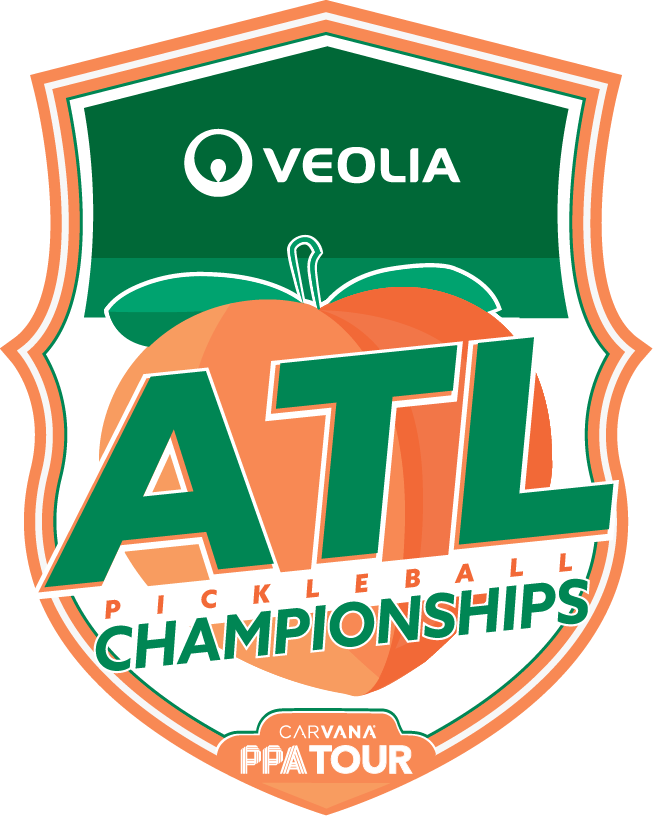Default Due to Paddle Legality in Newport on Saturday
| July 11, 2023
Sarah Ansboury and her partner, Jill Braverman were forced to forfeit their quarterfinal match Saturday at the PPA Tour’s OGIO Newport Beach Shootout due to Ansboury’s Gamma Obsidian Raw Carbon 16mm paddle testing over the official limits.
According to Sam Flaxman, PPA Tour Pro Player Director, every player who qualifies for the quarterfinals in the pro division at every PPA tournament faces mandatory testing of their paddle. Ansboury’s paddle, the Gamma Obsidian Raw Carbon 16mm, was deemed legal before the match during which she and partner Jillian Braverman won over Lina Padegimaite and Lacy Schneemann.
“As is our protocol, Sarah was informed before the quarterfinal that her paddle’s core and surface bonding had deteriorated considerably over the course of the tournament,” said Carl Schmits, USA Pickleball Managing Director of Pickleball Standards. “She received an official warning that, with the current manufacturing standards, her paddle had a high likelihood of crossing the legal threshold during the next match and that it would be in her best interests to retire the paddle. We can only recommend best practices, however – the final decision is in the hands of the player.”
The team of Schneemann and Padegimaite then challenged Ansboury’s paddle and after a retesting, Ansboury’s paddle was found to have degraded over the official limitations and, as such, was no longer legal.
Paddle testing, which takes about 5 minutes and is performed on site, is conducted by using an industry standard ultrasonic bond tester. Unlike the surface roughness test, which has some variation and therefore, must be performed several times and averaged, disbonding and crushed core testing is a single binary result that shows without ambiguity whether a paddle is legal or not.
“The paddle [Ansboury’s] was found to have a breakdown in the integrity of the facial plies and core within the paddle,” Flaxman said.
The PPA Tour tests for several “failure” issues on a paddle:
- Surface roughness
- Delamination, disbonding, and/or crushed core – which shows whether a paddle has a cavity which allows for a trampoline effect
According to the official rules of pickleball, rule 2.E.2 states the paddle’s hitting surface shall not contain delamination, holes, cracks or indentations that break the paddle skin or surface.
The result of Ansboury’s paddle being illegal meant a forfeit, which automatically advanced Schneemann and Padegimaite to the semifinals.
“The rules are the rules and they are very clear,” Ansboury said. “What’s unfortunate is the the players have found themselves in the middle of a manufacturer decision and, or a potentially antiquated rule. I’m proud of me and my partner Jill Braverman’s performance today.
“To ensure equity, I would encourage the PPA to release the exact number of failed paddles and brands from this weekend and to promote continuous, mandatory testing.”
While a number of paddles failed mandatory Tour testing and were retired over the course of the weekend before being played with, this incident was the first time testing had been conducted directly following a match after a player challenge. For this reason, this was the only occasion on which additional steps were taken, per PPA Tour standard protocols – all of which had been communicated to players prior to the tournament.
Players on the PPA Tour are allowed to challenge what they believe is an illegal paddle. That challenge is brought to the referee who then hands all players’ paddles over to tour officials. In this instance, the paddles of Braverman, Schneemann, and Padegimaite all tested within the limitations.
A challenge of a paddle that tests legal results in a $250 fine for the player who issued the challenge.
“Players bear the heaviest burden when it comes to ensuring the equipment they use is within legal limitations,” Flaxman said. “Unfortunately, because of the rapid breakdown of the integrity of some paddles that is currently occurring throughout the sport, players are put in a tough spot. The paddle was legal before the match and after the match it wasn’t.”
Schmits expanded on the equipment used to conduct paddle testing, which has undergone rigorous trialing and calibration before being implemented in the field.
“USA Pickleball is using a mature, off-the-shelf technology that is foundational in aerospace and designed specifically for this application. This is not a science project or proprietary solution. The instrument uses ultrasonic frequencies to determine if the following performance-impacting structural issues have occurred; if the bond between facial plies and the core of the paddle has separated (disbonding), if the core has broken down and is creating a cavity (crush core), or if the surface plies, of which there are usually several, have separated (delamination). It’s important to note that the latter term is generally used to describe all three, as it does in USA Pickleball Regulation 2.E.2.
“Our highest priority is the integrity of the game and consistent standards for all, without bias or ambiguity,” said Connor Pardoe, CEO of the PPA Tour. “We stand behind our professional players and want to cultivate a process that is reliable, functional, and transparent and will take uncertainty out of the equation. Players, paddle companies, and our industry partners, USA Pickleball and Major League Pickleball, are all in agreement when it comes to formalizing equipment compliancy. We are moving forward in lockstep towards the same goals together.”





